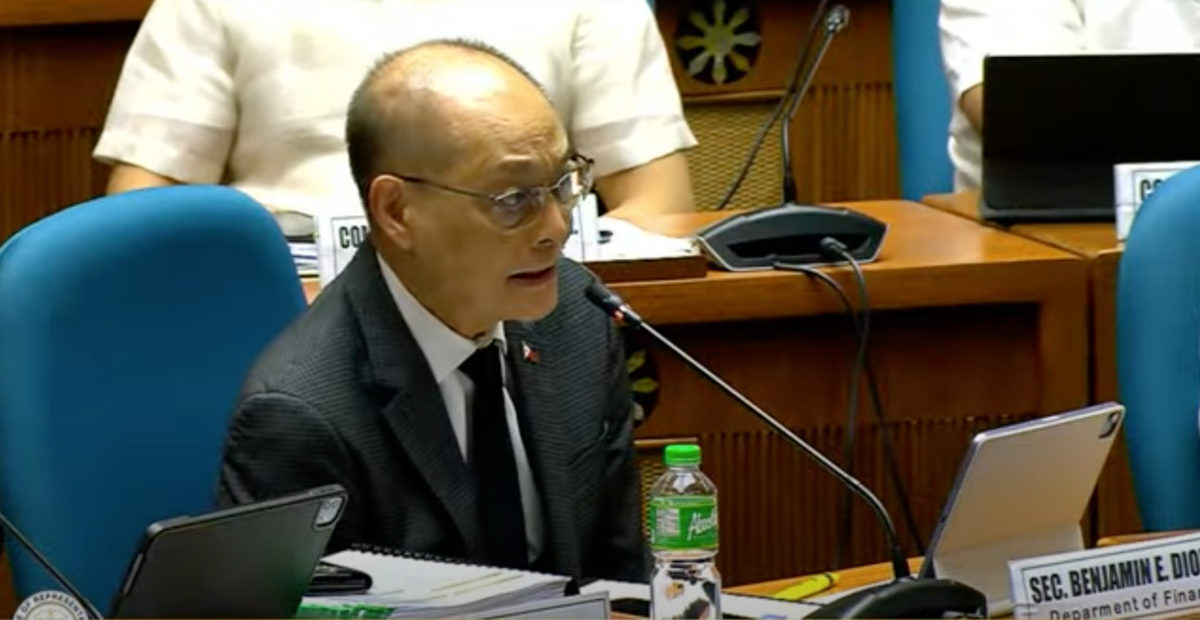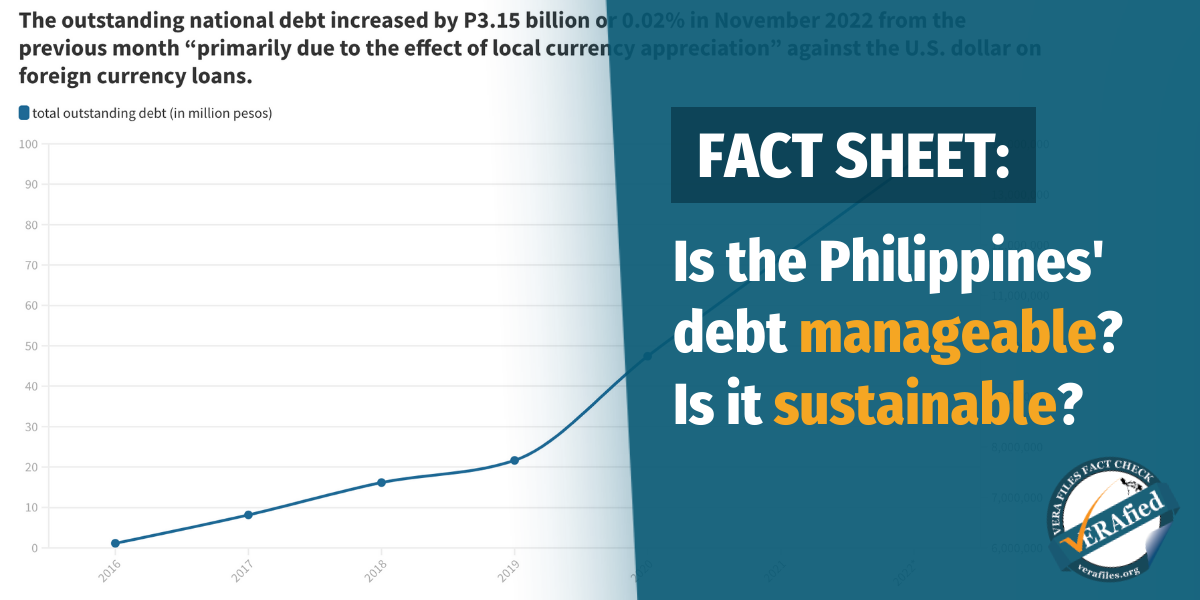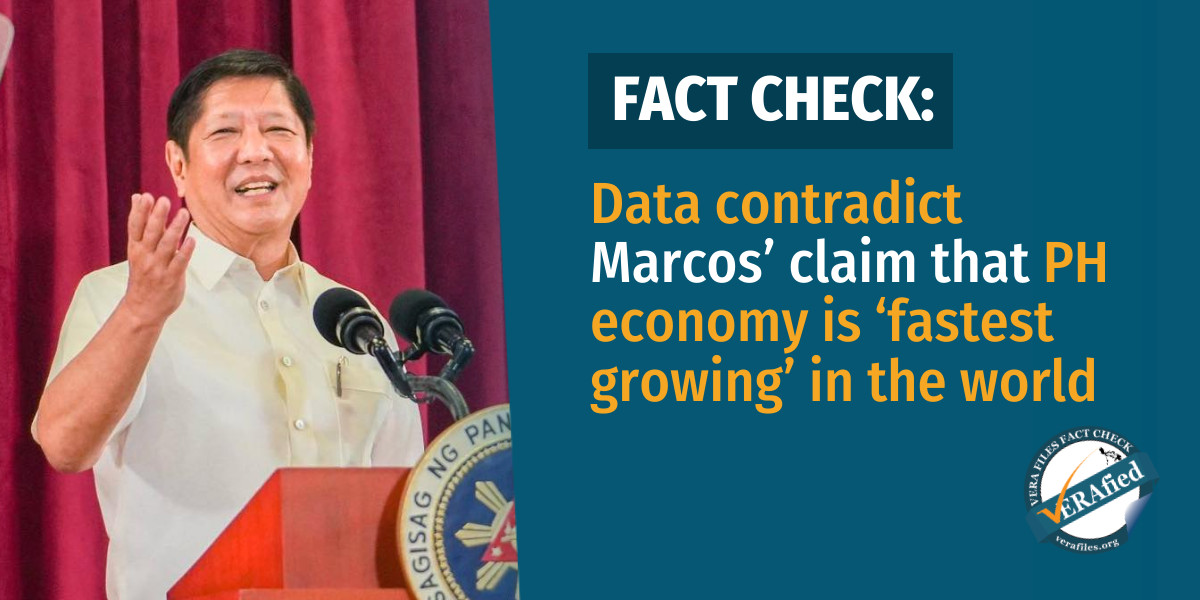Finance Secretary Benjamin Diokno contradicted President Ferdinand Marcos Jr. on the state of the country’s debt-to-gross domestic product (GDP) ratio.
The ratio measures total government debt as a percentage of GDP, which is the value of all goods and services produced domestically over a certain period of time. It is a “key indicator for the sustainability of government finance,” according to the Organisation for Economic Cooperation and Development.
STATEMENT
During a briefing by the Development Budget Coordination Committee (DBCC) on the proposed 2024 budget at the House of Representatives, Albay Rep. Edcel Lagman asked the economic managers about the implications of an earlier remark by the president that the country’s debt-to-GDP ratio is “worrisome.”
Diokno responded:
“Well I don’t know what’s the… Can anybody say…? It’s not worrisome, Your Honor. It’s not worrisome… I don’t know where…”
Source: House of Representatives, FY 2024 Budget Briefings (Committee) DBCC: DBM, NEDA, DOF, BSP (Part 2), Aug. 10, 2023, watch from 24:33 to 24:45
He added:
“The rule of thumb, Your Honor, before the crisis is that if your debt-to-GDP ratio is 60%, you’re okay… [R]emember, before the pandemic, Your Honor, our debt-to-GDP ratio was only in the neighborhood of 40% more or less. And we have to borrow money because of the pandemic, and it went up to around 62% but that’s still manageable, Your Honor. Right now, because of the pandemic, I would say that the new rule of thumb should be around 70%, Your Honor.”
Source: watch from 24:57 to 25:37
The DBCC reviews and approves the macroeconomic targets, revenue projections, borrowing level and the annual national budget and spending priorities before these are recommended to the Cabinet and the president. It is composed of the Department of Budget and Management, National Economic and Development Authority, Department of Finance and the Bangko Sentral ng Pilipinas and the Office of the President.
FLIP-FLOP
The day before the briefing, Marcos had raised his concern over the country’s debt-to-GDP ratio before members of the United States-Association of Southeast Asian Nations Business Council.
He said:
“Although we worry about our debt-to-GDP ratio in the Philippines as it stands, it’s about 63% and that’s a little high for us, and it is not ideal. I’d say we’re doing better than our neighbors, perhaps. But nonetheless, it’s still something that we need to be looking at and the way that we believe we can pull ourselves out of that debt ratio and improve that debt ratio is through growth.”
Source: RTVMalacañang, Courtesy Call of U.S.-ASEAN Business Council (Speech), Aug. 9, 2023, watch from 17:18 to 17:51
The Marcos administration targets to reach a GDP growth of 6.5% to 8% in 2024. (Read VERA FILES FACT CHECK: Marcos’ report on 6.4% GDP growth rate in SONA needs context)
The Bureau of the Treasury reported that the debt-to-GDP ratio stood at 61% as of June 2023. Multilateral lenders such as the International Monetary Fund consider a 60% threshold as manageable for developing economies such as the Philippines.
Nicholas Mapa, senior economist at ING Bank, earlier warned that the longer the Philippines stays above this level, “the more susceptible” it will be to a credit rating downgrade “by at least one of the ratings agencies.” A credit rating indicates an entity’s ability to pay its financial obligations.
The Philippines’ credit rating profile is assigned a “stable outlook” by at least three agencies: S&P Global, Fitch Ratings and Moody’s Investors.
(Read VERA FILES FACT SHEET: Is the Philippine debt still ‘manageable’?)
BACKSTORY
In the proposed 2024 national expenditure program, debt interest payments amount to P670.47 billion and P28.70 billion for net lending. Principal amortization, which is excluded from the budget proposal, is about P1.24 trillion.
Under the proposed budget, the administration plans to borrow P2.46 trillion next year to finance the country’s budget deficit, which reached P551.7 billion as of June 2023.
Lagman pointed out that total debt servicing is about one-third (or 32.9%) of the P5.76-trillion national budget.
May nakita ka bang kaduda-dudang status, picture, meme, o iba pang post na gusto mong i-fact-check namin? Sagutan lang itong reader request form o i-message sa Viber ang VERA, the truth bot (Philippines).
Sources
Organisation for Economic Cooperation and Development official website, General government debt, accessed Aug. 17, 2023
Department of Budget and Management, 185th DBCC Meeting, accessed Aug. 17, 2023
United Nations Conference on Trade and Development, A world of debt: A growing burden to global prosperity, July 2023
U.S. Securities and Exchange Commission, Updated Investor Bulletin: The ABCs of Credit Ratings, accessed Aug. 17, 2023
S&P Global, Asia-Pacific Banking Country Snapshots_Pain Within Expectations, Aug. 9, 2023
Fitch Ratings, Fitch Revises Outlook on Philippines to Stable; Affirms at ‘BBB’, May 22, 2023
Moody’s Investors Service, Banking System Outlook – The Philippines: Outlook remains stable as economic recovery limits asset risks, March 1, 2023
Department of Budget and Management, Debt Service Fund-Interest Payment, accessed Aug. 17, 2023
Department of Budget and Management, National Government Fiscal Program, FY 2022-2026, accessed Aug. 17, 2023
Department of Budget and Management, National Government Debt Service Expenditures, FY 2022-2024, accessed Aug. 17, 2023
(Ginagabayan ng code of principles ng International Fact-Checking Network sa Poynter, ang VERA Files ay sumusubaybay sa mga maling pahayag, flip-flops, nakaliligaw na mga pahayag ng mga pampublikong opisyal at kilalang personalidad, at pinasisinungalingan ang mga ito gamit ang tunay na ebidensya. Alamin ang inisyatibong ito at aming pamamaraan.)



